Belgrade is a city with a rich cultural history, and Serbian food is a reflection of this. Serbian cuisine has been influenced by many different cultures, both in Europe and from different parts of the world. With Serbia being at the crossroads of east and west, you’ll find traditional dishes that have been shaped by both Middle Eastern and European influences.
The uniqueness of Serbian dishes makes it an excellent choice for Traveleaters looking to try something new while visiting this stunning country in Southeast Europe.
SERBIAN FOOD QUICK LINKS
If you’re planning a trip to Serbia and want to really dive into the cuisine, then you may be interested in joining a Serbian food or wine tour.
TOURS & OTHER SERVICES
- Serbian Food Tours: Food and Wine/Drinking Tours in Serbia
- eSIM: Serbia eSIM
Save This on Pinterest!
No time to read this Serbian food guide now? Click on the save button and pin it for later!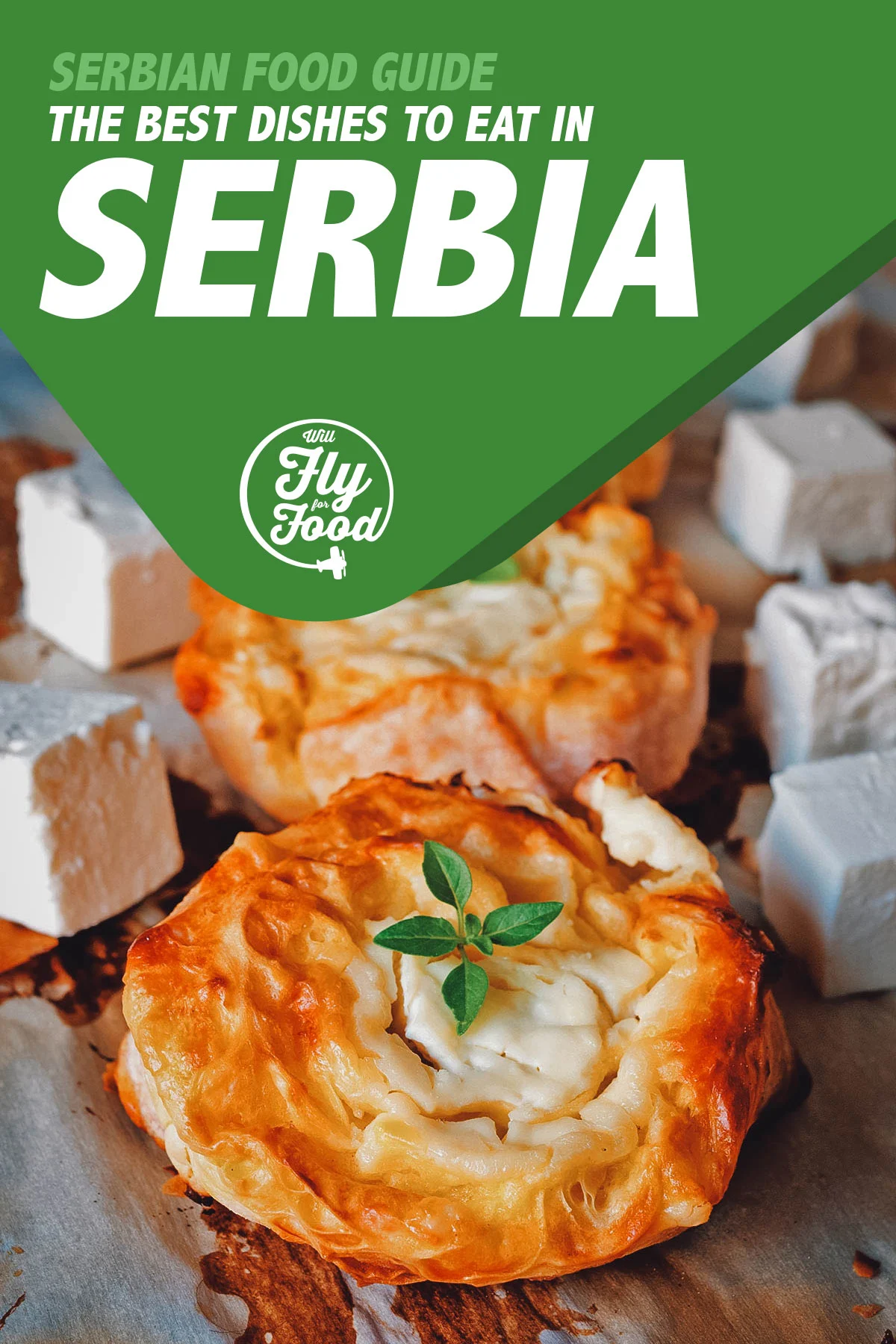
Photo by uroszunic
WHAT IS TRADITIONAL SERBIAN FOOD?
Serbian food is a unique blend of Byzantine, Mediterranean, Central European, and Balkan influences. While every region of Serbia has its own culinary traditions, some Serbian dishes are considered national treasures and are popular throughout the country.
Typical Serbian food is as rich and diverse as its landscape. Seasonality is important in Serbian cuisine with its ingredients usually being of high quality and very fresh. Rich grilled meats, minced meat, fresh vegetables, bread, cheese, pastries, and wine have long played an important role in Serbian culture and cuisine.
Like the cuisines of many Balkan countries, flavors are generally mild with the most commonly used seasonings being paprika, salt, and black pepper.
MUST-TRY TRADITIONAL SERBIAN DISHES
1. Ajvar
Serbian ajvar is a vegetable relish, made principally from red bell peppers and eggplant. It originates from the Balkans in southeastern Europe and is very common in traditional restaurants throughout Serbia, Bosnia and Herzegovina, Croatia, and North Macedonia.
In Serbia, ajvar is often enjoyed with Serbian bread like lepinja or pogača. You’ll usually find it served as a side dish with grilled meats or fish, Serbian hamburgers (pljeskavica), and grilled meat sausages (ćevapčići).
Aside from roasted red bell peppers and eggplant, typical ingredients in Serbian ajvar include garlic, olive oil (or sunflower oil), lemon juice, white vinegar, salt, and ground black pepper. Traditionally prepared in mid-autumn when peppers are most abundant, ajvar is usually made in large quantities and then stored in jars to last for several months.
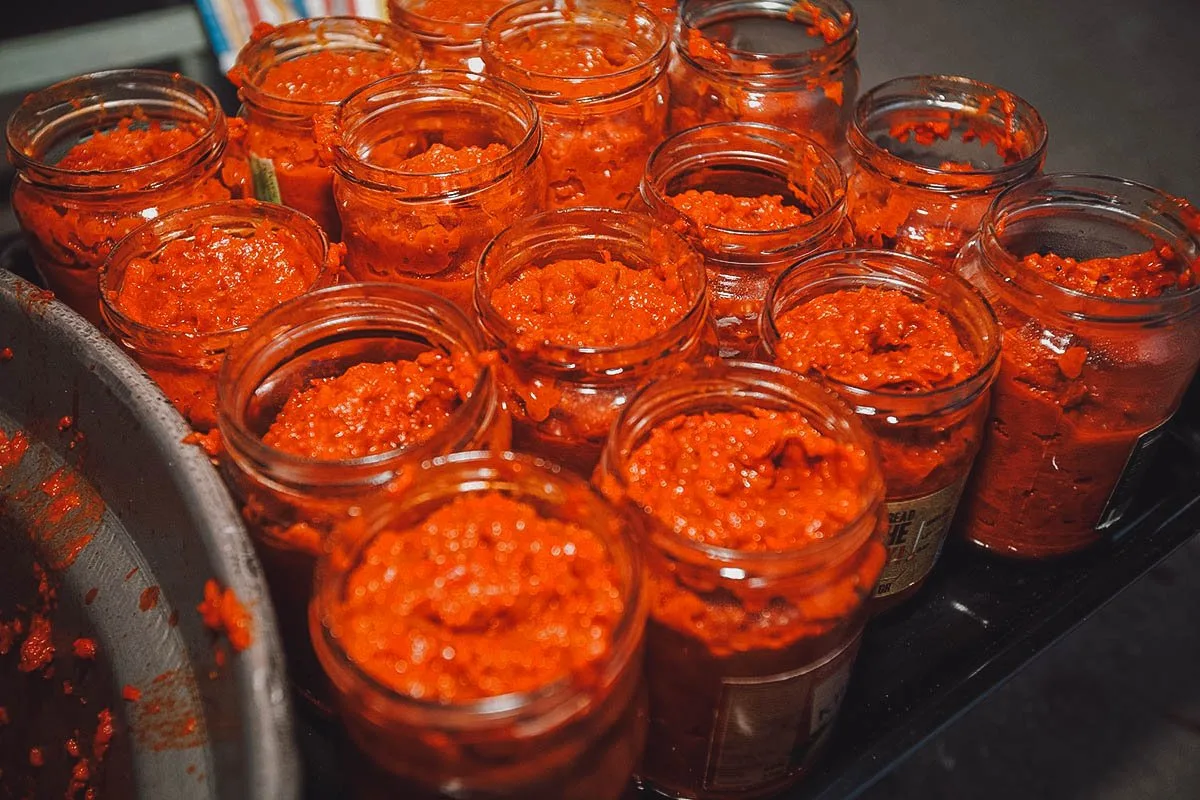
Photo by MitaStockImages
2. Srpska Salata
Srpska Salata is the Serbian version of the famous Bulgarian salad known as shopska salad. It’s made with finely chopped vegetables like tomatoes, cucumbers, onions, and peppers. Srpska salata is almost identical to the Bulgarian original except it’s typically made without cheese.
Srpska salata is a Serbian salad that can be enjoyed at any time of year, but it’s especially suited for the summer when vegetables are fresh and abundant. Seasoned simply with just salt and pepper, it’s drizzled with sunflower oil and white wine vinegar before serving.
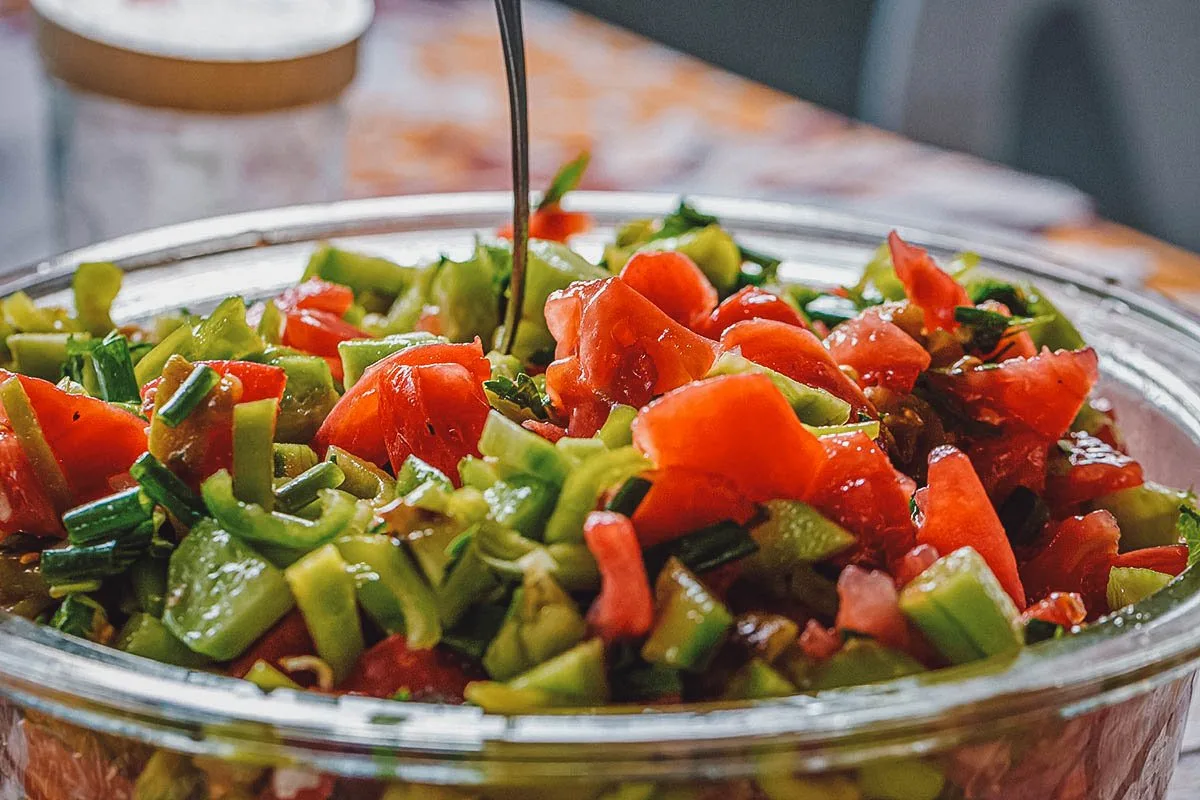
Photo by fanfon
3. Punjene Paprike
The word punjen refers to something that’s stuffed, so punjene paprike means “stuffed pepper”. It’s a type of dolma – a family of stuffed vegetable dishes popular in many countries throughout the Balkans, the South Caucasus, Central Asia, and the Levant.
Punjene paprike is a type of dolma made with hollowed-out sweet peppers stuffed with rice, meat, and other ingredients. The stuffed peppers are cooked and served in a sauce made with tomato paste, onions, olive oil, and seasonings.
Punjene paprike is a mouthwatering Serbian dish that can be enjoyed as a side dish or main course, often with a side of boiled potatoes.
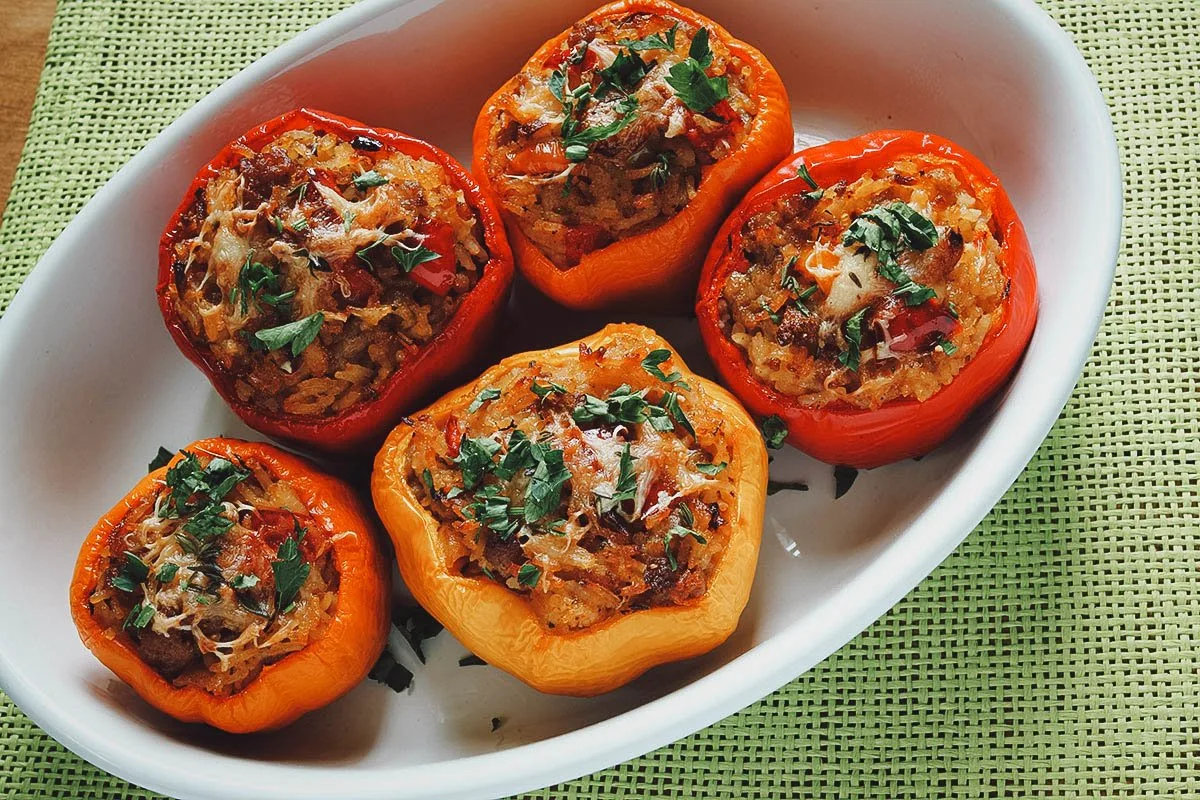
Photo by fotokris44
4. Sarma
Sarma is a form of dolma made with similar ingredients. But instead of being stuffed in hollowed-out vegetables, the ingredients are wrapped in pickled cabbage leaves and then cooked over sauerkraut. The word sarma is derived from the Turkish language and means “rolled” or “wrapped.”
Like punjene parike, sarma is a popular and beloved dish in Balkan cuisine. Aside from the Balkans, it’s consumed in many countries throughout Central Europe, the South Caucasus, and the Middle East. It’s a hearty dish that can be enjoyed everyday though it becomes especially popular in winter and over the holidays.
Sarma stuffing is made with pretty much the same ingredients as punjene paprike – ground meat, rice, and raw onions. The filling is wrapped in pickled cabbage leaves and then slowly cooked in a clay pot over a bed of sauerkraut with smoked meat and tomato sauce.
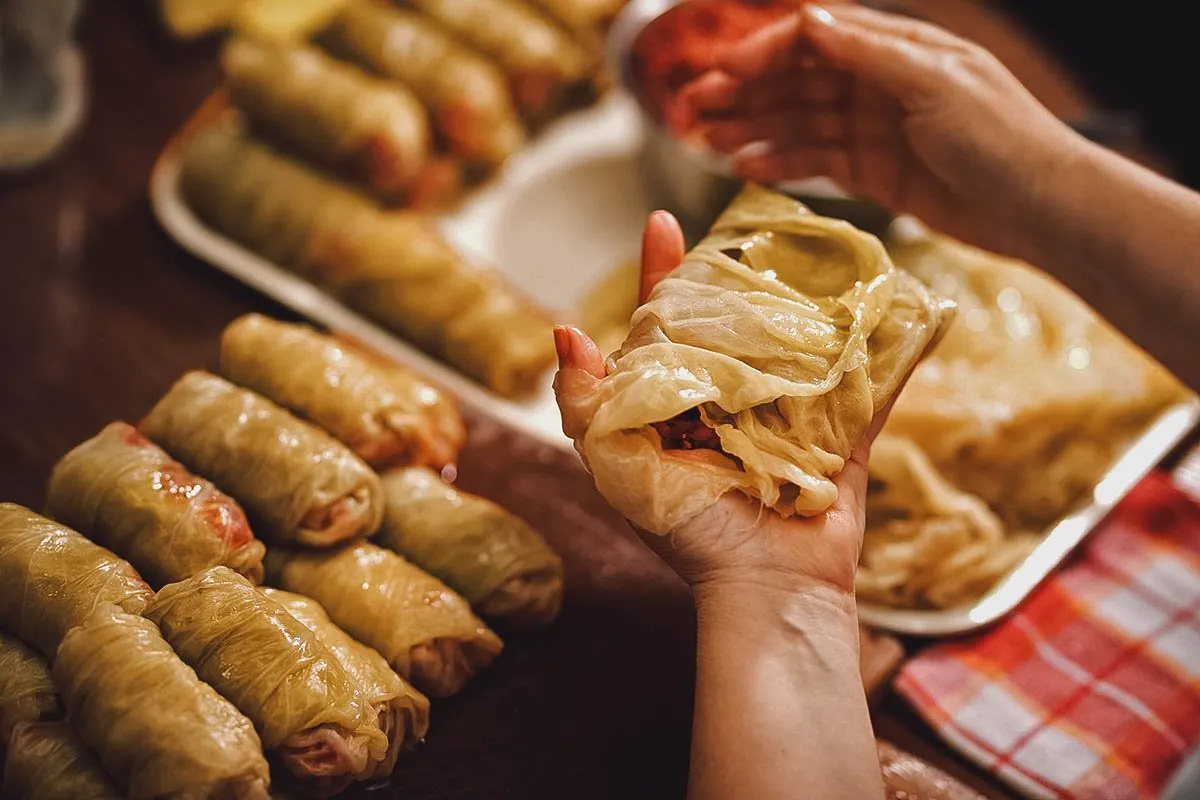
Photo by cherriesjd
5. Gibanica
Gibanica is a type of Serbian cheese pie made with phyllo dough, white cheese, and eggs. It’s a popular dish in Balkan cuisine and exists in many variations from sweet to savory, simple to elaborate. Gibanica is one of the most popular Serbian foods and widely considered to be a national dish.
The most commonly served version of this traditional Serbian dish is called gužvara, meaning “crumpled”. It gets its name from the filo pastry being crumpled and soaked in a mixture of cheese, eggs, milk, lard, salt, and kajmak – a thick cream made from cow or sheep milk. The sheets of soaked pastry are then layered and baked in an oven.
Traditionally eaten with yogurt, gibanica is a versatile dish that can be enjoyed at any time of the day. It’s commonly made in Serbian homes and enjoyed for breakfast or dinner, as an appetizer or a snack.
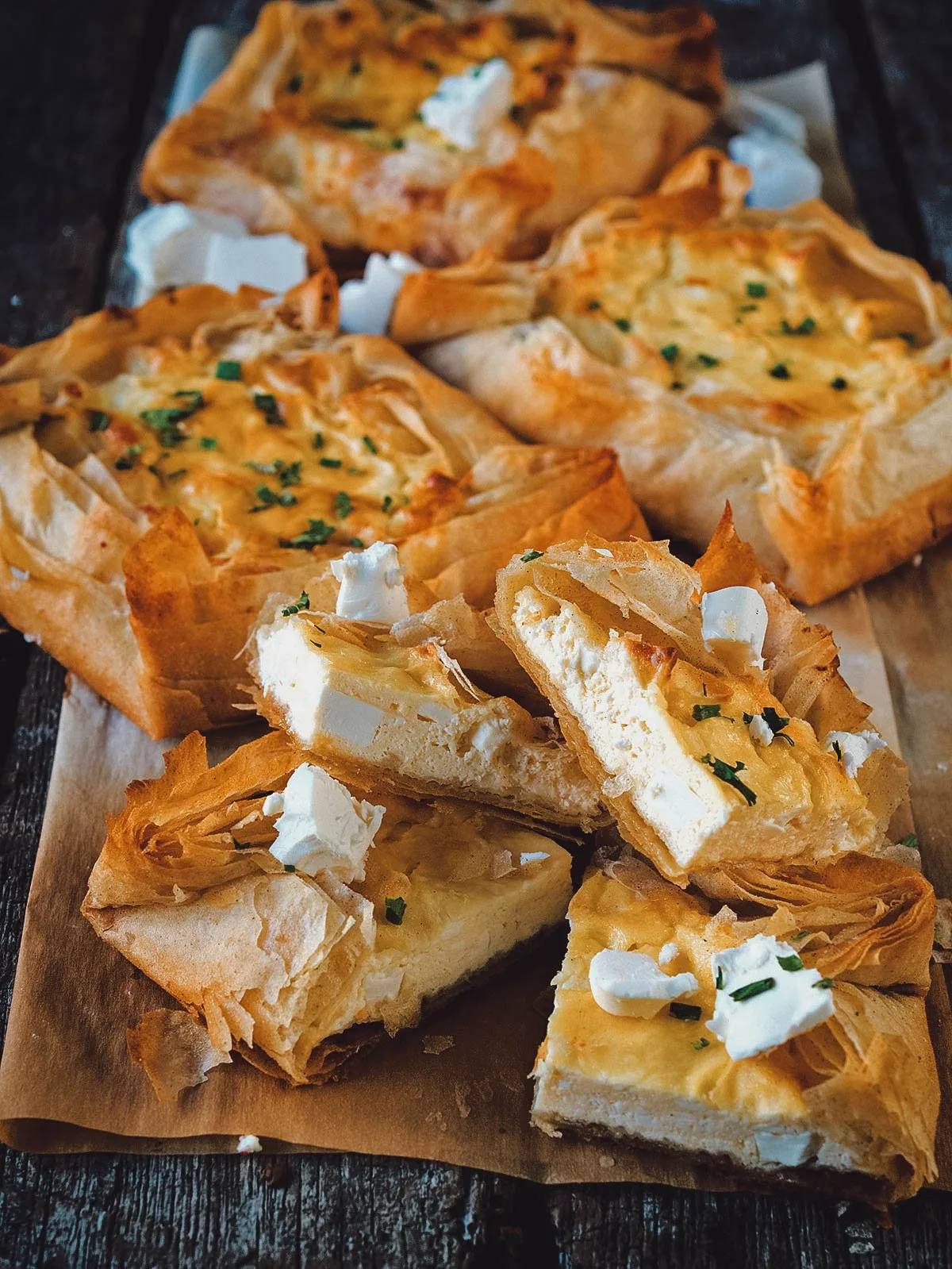
Photo by uroszunic
6. Prebranac
Prebranac is a type of Serbian bean stew. It’s a hearty meal consisting of baked beans cooked with onions, garlic, sweet Hungarian paprika, bay leaves, and sunflower oil.
Prebranac is a staple dish in Serbian cuisine. It’s a cheap and filling meal originally made by farmers to last them through the long winters. Recipes vary from cook to cook but it’s typically made with white beans and commonly served as an appetizer or main dish, often with a side of warm crusty bread.
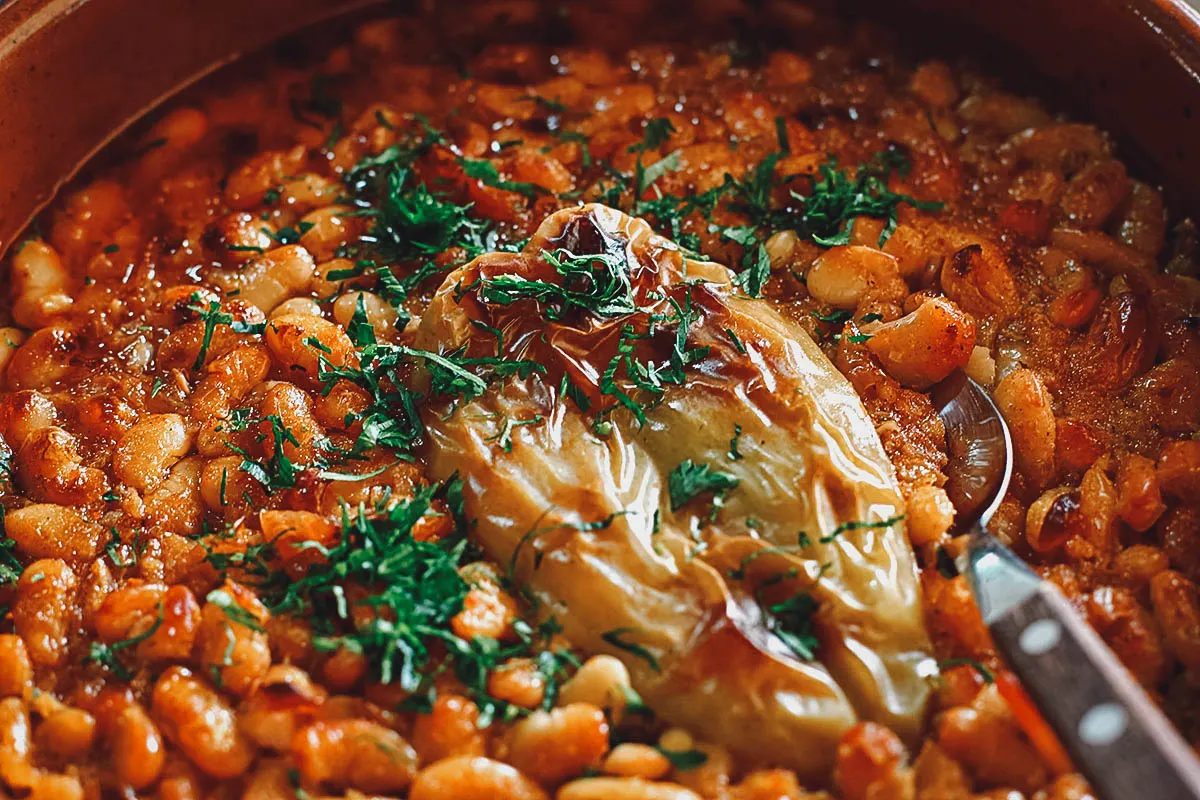
Photo by [email protected]
7. Podvarak
Podvarak is a simple dish made with sauerkraut, garlic, finely chopped onions, and some type of meat, usually roast pork or chicken. The ingredients are baked together in an oven and can be made with or without meat.
Like prebranac, podvarak is classic Serbian comfort food that’s typically prepared during the colder months in Serbia. It’s often made in large quantities for family gatherings. Podvarak with meat is traditionally served as a main course while meatless versions are served as a side dish.
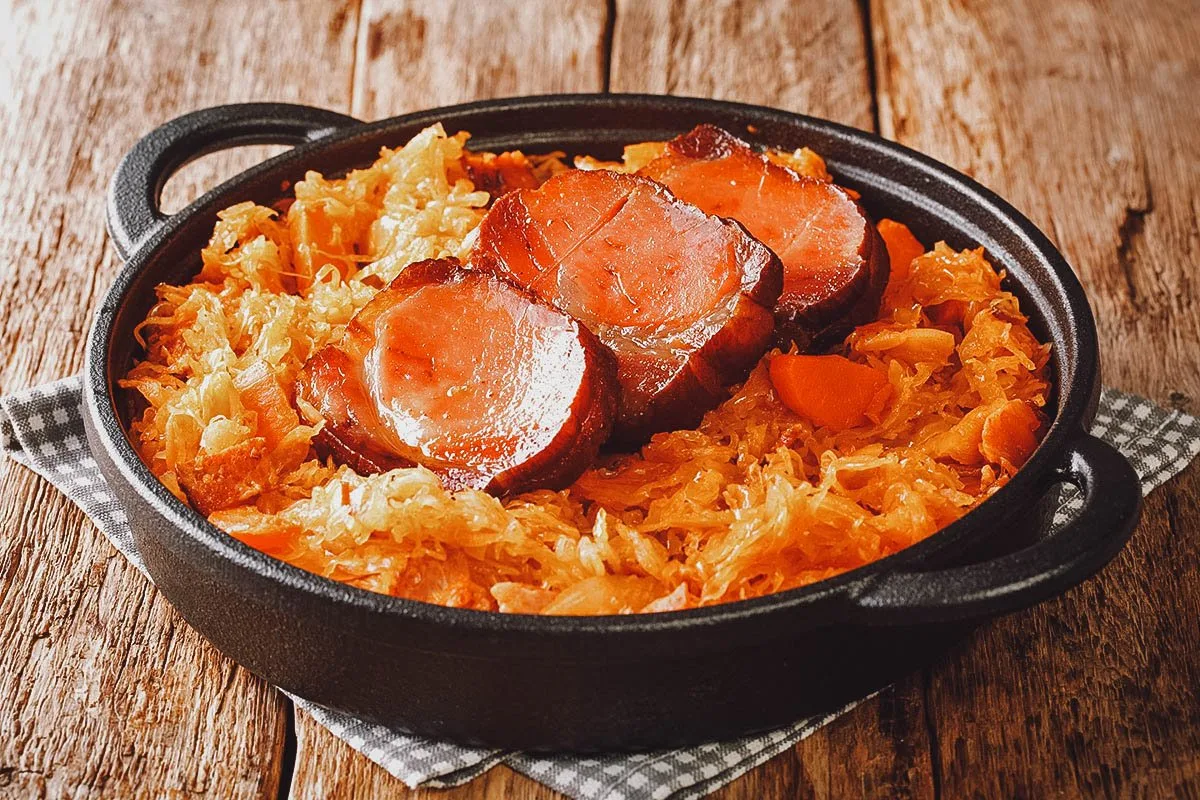
Photo by lenyvavsha
8. Ćevapčići
Ćevapčići is one of the most well-known and beloved Serbian foods. It’s a Serbian national dish that’s also popular in many Balkan countries like Bosnia and Herzegovina, Croatia, Slovenia, Albania, and Montenegro.
Ćevapčići is a type of grilled minced meat sausage. Recipes vary but it’s typically made with a mixture of beef, lamb, mutton, and pork seasoned with garlic, paprika, black pepper, and salt. The heavily seasoned meat mixture is shaped into small sausages and then grilled over an open flame.
Smokey and delicious, you can expect about 5-10 sausages served on a plate with different sides like ajvar, kajmak, cottage cheese, sour cream, chopped onions, and red pepper. The sausages can also be stuffed in lepinja flatbread and eaten like a sandwich.
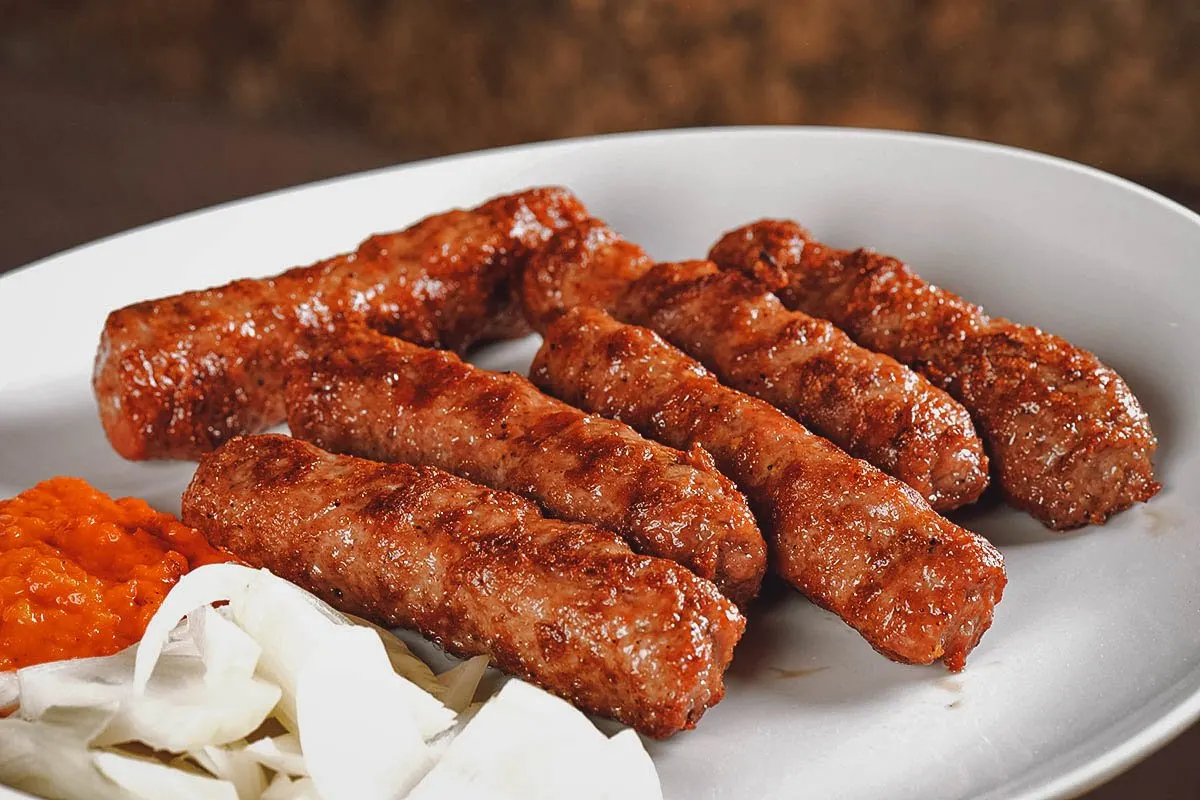
Photo by vision.si
9. Pljeskavica
Like ćevapčići, pljeskavica is a Serbian national dish. It’s popular in many countries throughout the Balkans like Bosnia and Herzegovina, North Macedonia, Croatia, and Montenegro.
You can think of pljeskavica as a type of Serbian hamburger made with ground beef, pork, or lamb. It can be served in lepinja flatbread or on a plate with various side dishes like ajvar, kajmak, and chopped onions.
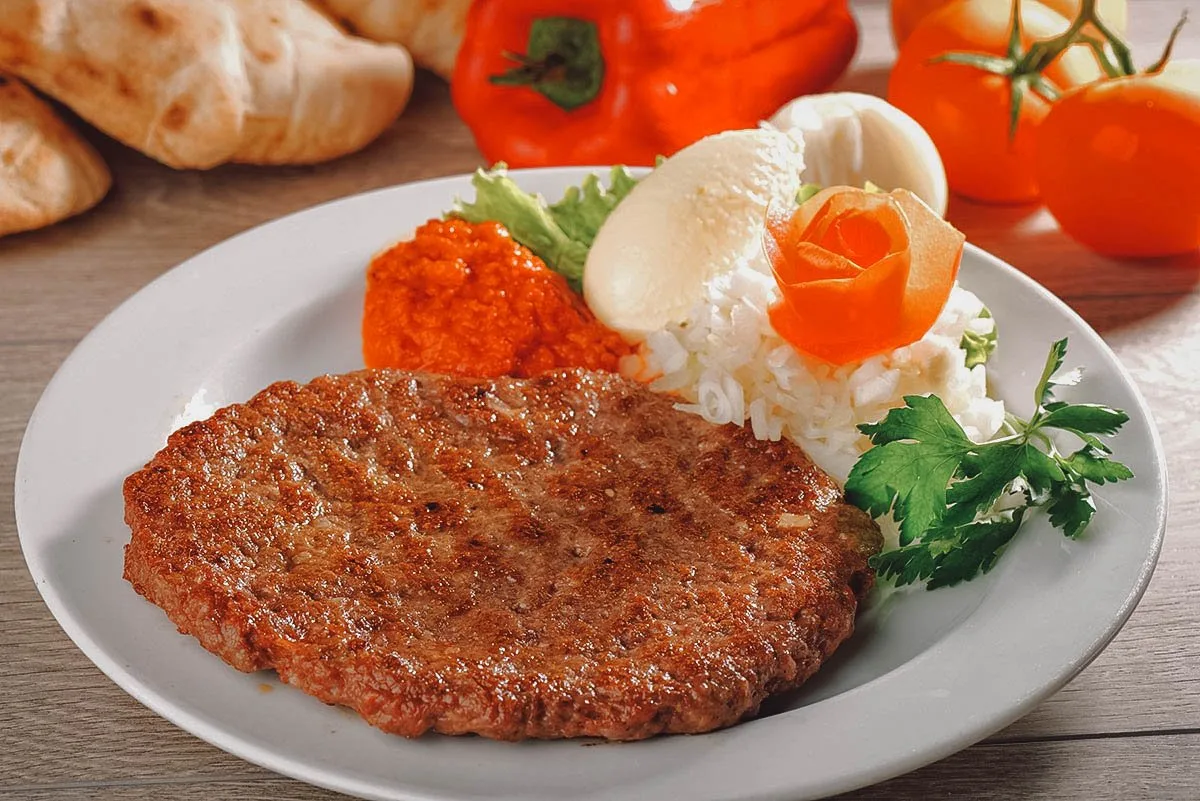
Photo by vision.si
Here’s a look at pljeskavica served in flatbread like a sandwich.
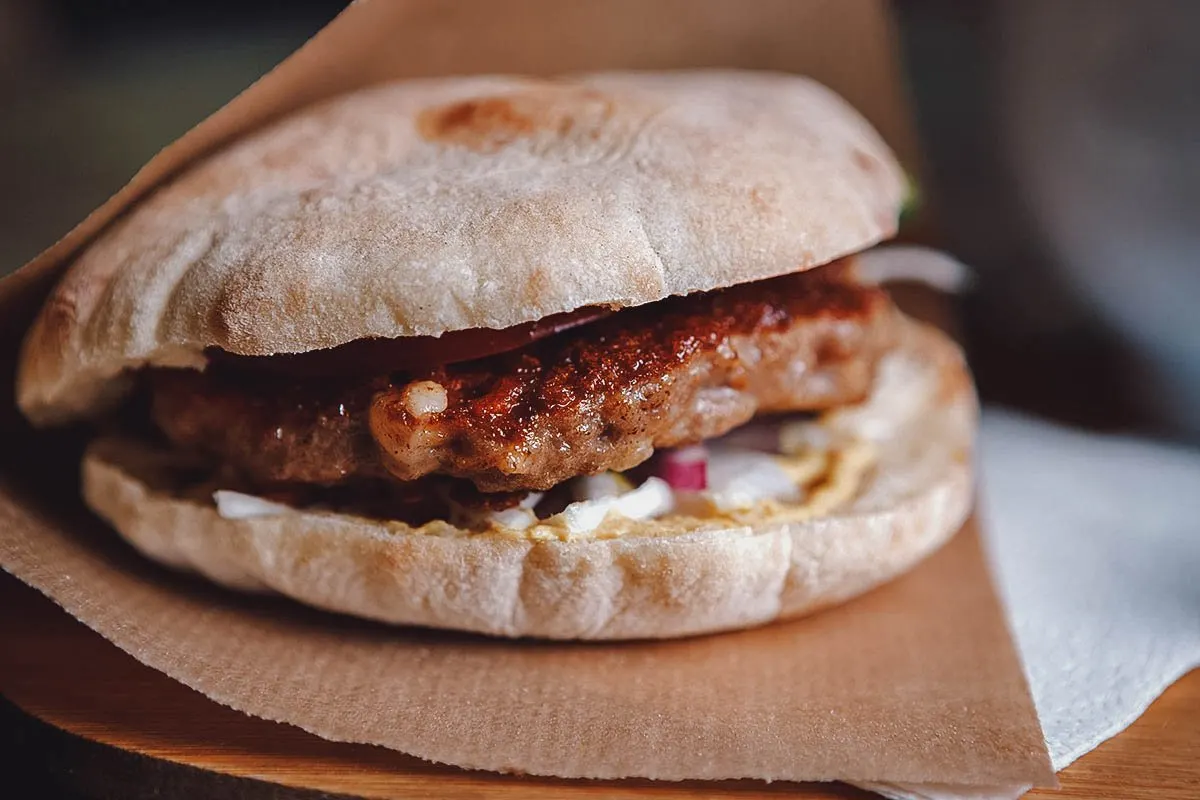
Photo by hurricanehank
10. Roštilj
If you’re an unrepentant carnivore and love meat dishes, then you need to try roštilj. It doesn’t refer to a single dish but a Serbian barbecue consisting of different types of meat grilled over an open flame.
Many Serbian restaurants in Belgrade will offer roštilj. Typical meats include ćevapčići, pljeskavica, kobasice (spicy Serbian sausage), ražnjići (skewered meat), and vešalice (pork loin). If you get an order of mixed meat, then you’ll get a taste of everything on one plate.
Roštilj can be enjoyed throughout Serbia but the cities of Leskovac and Novi Pazar are especially renowned for their barbecue.
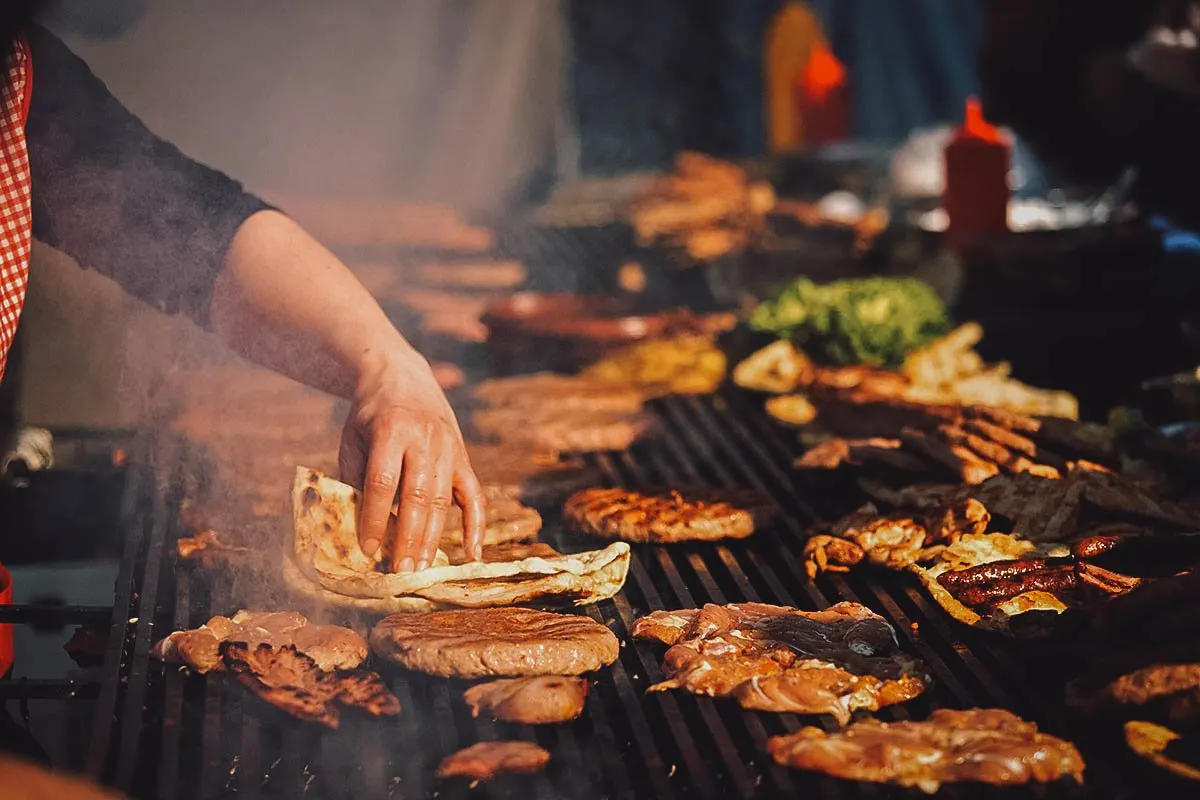
Photo by DariaKM
11. Čvarci
Do you enjoy snacking on pork rinds? If you do, then you need to try čvarci, the Serbian version of these tasty deep-fried pork cracklings.
A rustic countryside food, čvarci is typically prepared in autumn and consumed through the winter, either as a snack or as an ingredient in other Serbian dishes. They’re popular in many European countries like Romania, Croatia, Slovenia, Czechia, Ukraine, and Hungary.
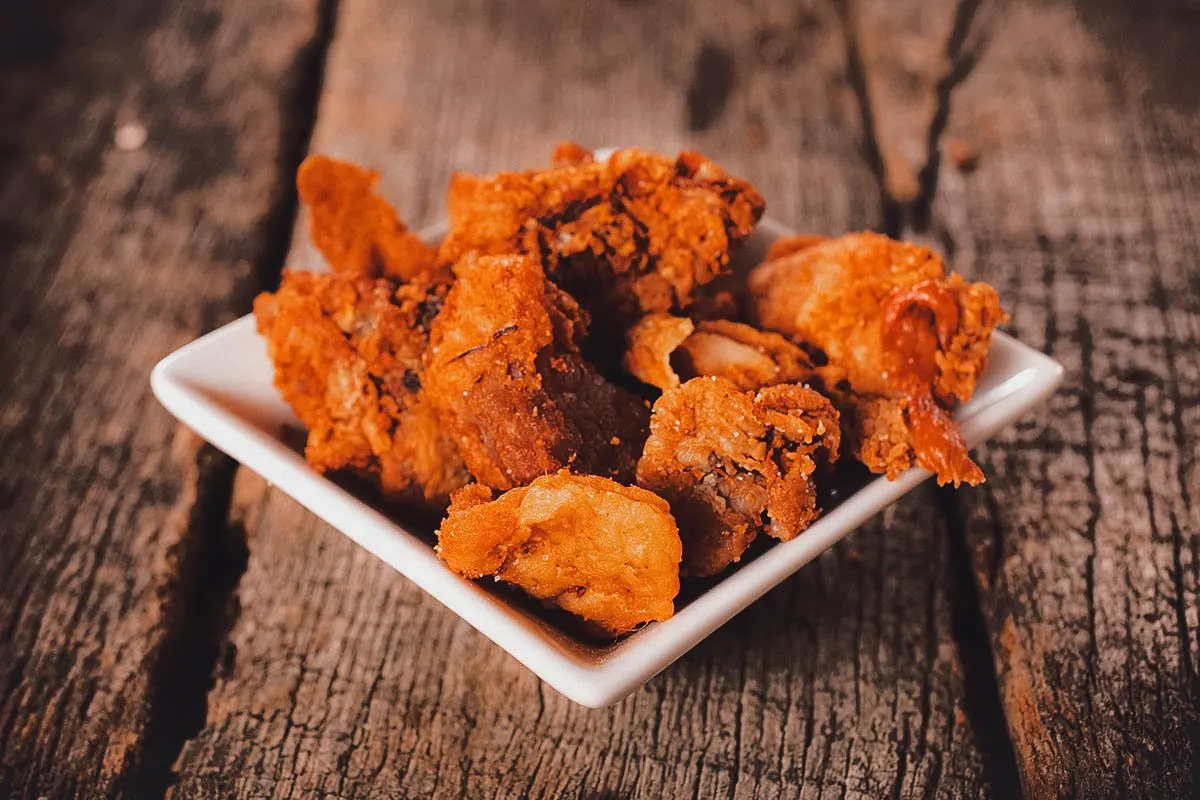
Photo by uroszunic
12. Karađorđeva Šnicla
Karađorđeva šnicla is a Serbian dish consisting of a breaded and rolled veal or pork cutlet stuffed with kajmak. It was named after Karađorđe, a Serbian revolutionary who led the First Serbian Uprising against the Ottoman Empire from 1804-1813.
To make karađorđeva šnicla, a cutlet of veal, pork, or beef is rolled over kajmak and coated in flour and beaten eggs. The stuffed roll is then deep-fried and served with a side of roasted potatoes and tartar sauce.
This tasty meat roll is one of the most popular Serbian foods though it’s a relatively new invention. It was created in 1959 by a Serbian chef who needed to make chicken kiev for a distinguished guest from the Soviet Union. He was out of chicken so he used veal instead, creating this unique Serbian twist known as karađorđeva šnicla.
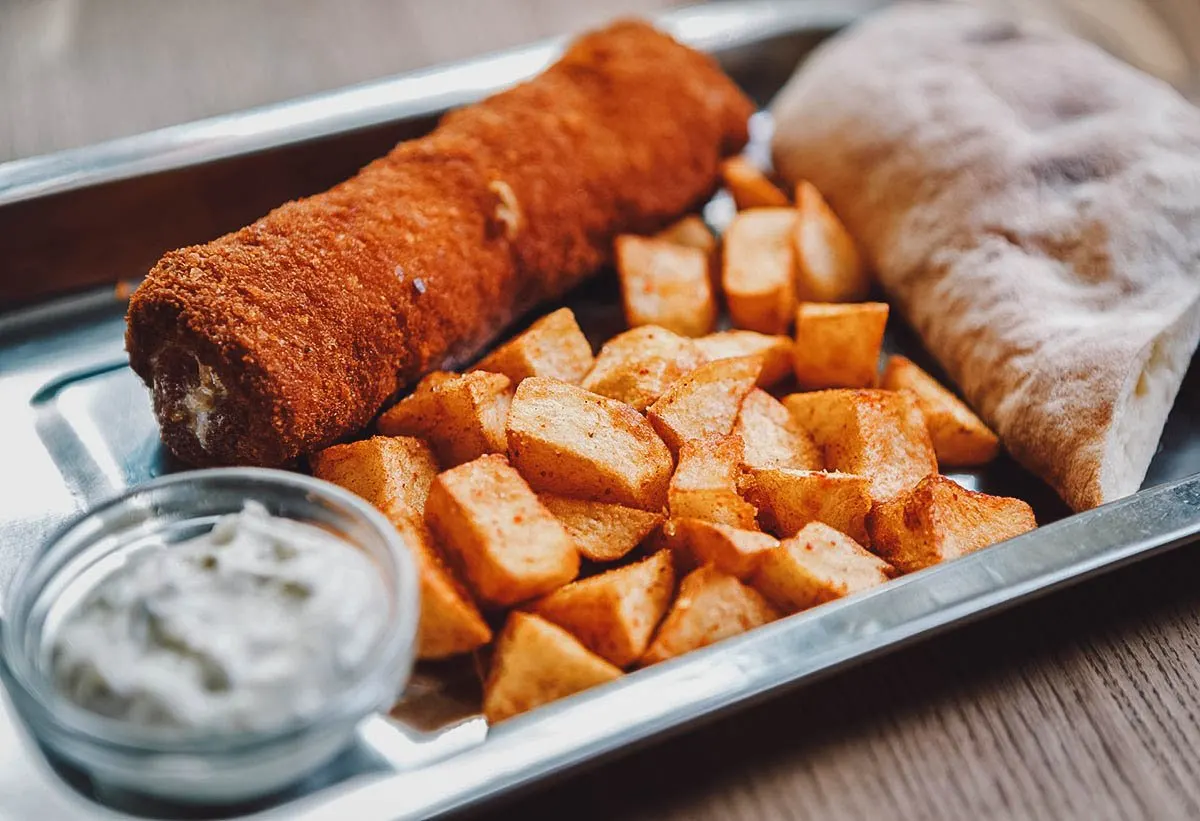
Photo by hurricanehank
13. Mućkalica
Mućkalica is a Serbian meat dish made with vegetables and leftover meat, mostly from yesterday’s roštilj. Its name is derived from the word mućkati which means to “shake, stir, or mix”, perhaps in reference to the dish’s combination of various leftovers.
Like roštilj, mućkalica is enjoyed throughout the country but the most famous version is from Leskovac in south Serbia. Known as leskovačka mućkalica, it’s typically made with fatty cuts of grilled pork, bacon, tomatoes, roasted peppers, onions, paprika, and chili peppers. It’s seasoned with salt and pepper and often enjoyed with lepinja, ajvar, and fresh Serbian salad.
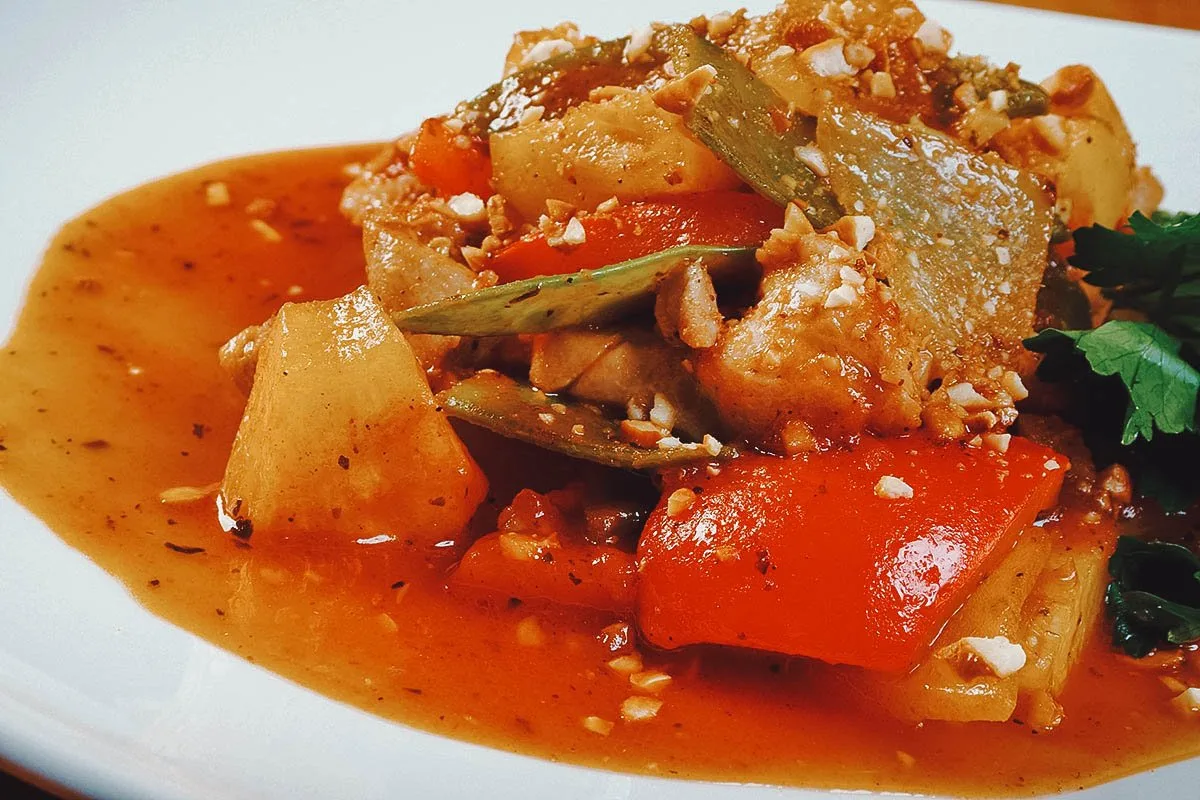
Photo by fanfon
14. Vanilice
If you have a sweet tooth, then you need to try vanilice. As you can probably guess from the name, it’s a Serbian vanilla cookie typically enjoyed around the holidays.
Vanilice means “little vanillas” and is one form of sitni kolaci or Serbian tiny cookie. It consists of two vanilla walnut cookies held together with a dollop of jam. Apricot or rose hip jam are most traditional though other flavors can be used as well. The tiny cookies are then dusted with a generous amount of vanilla sugar before serving.
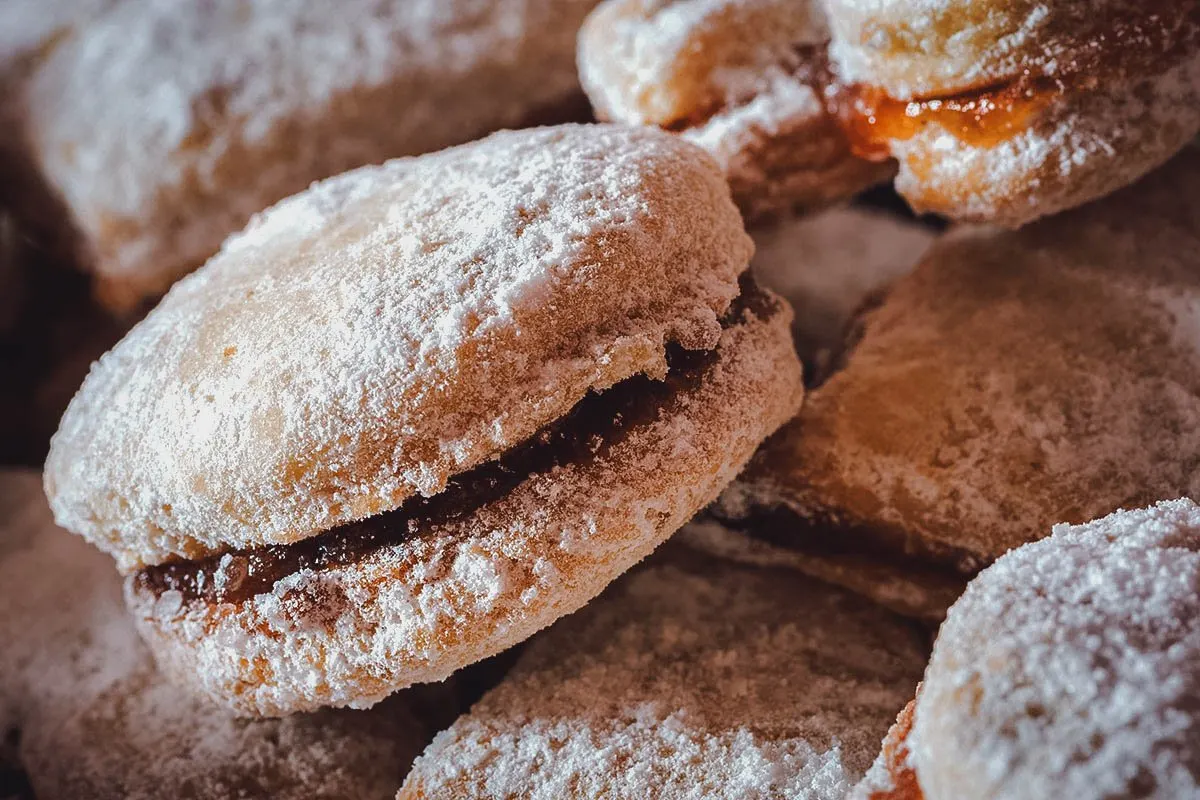
Photo by kuzmire
15. Rakija
Rakija is the national drink of Serbia and in many other countries throughout the Balkans. It’s a collective term used to describe a family of fruit spirits or brandy popular throughout the region.
Serbian rakija comes in many varieties but the most popular version is sljivovica, a type of rakija made with plum. It’s produced commercially and at home and typically contains about 40-50% ABV.
Plum is the most common but Serbian rakija can be made with a host of different fruits like apricots, grapes, bananas, peaches, apples, pears, cherries, and figs. It can even contain other ingredients like nuts, herbs, and honey.
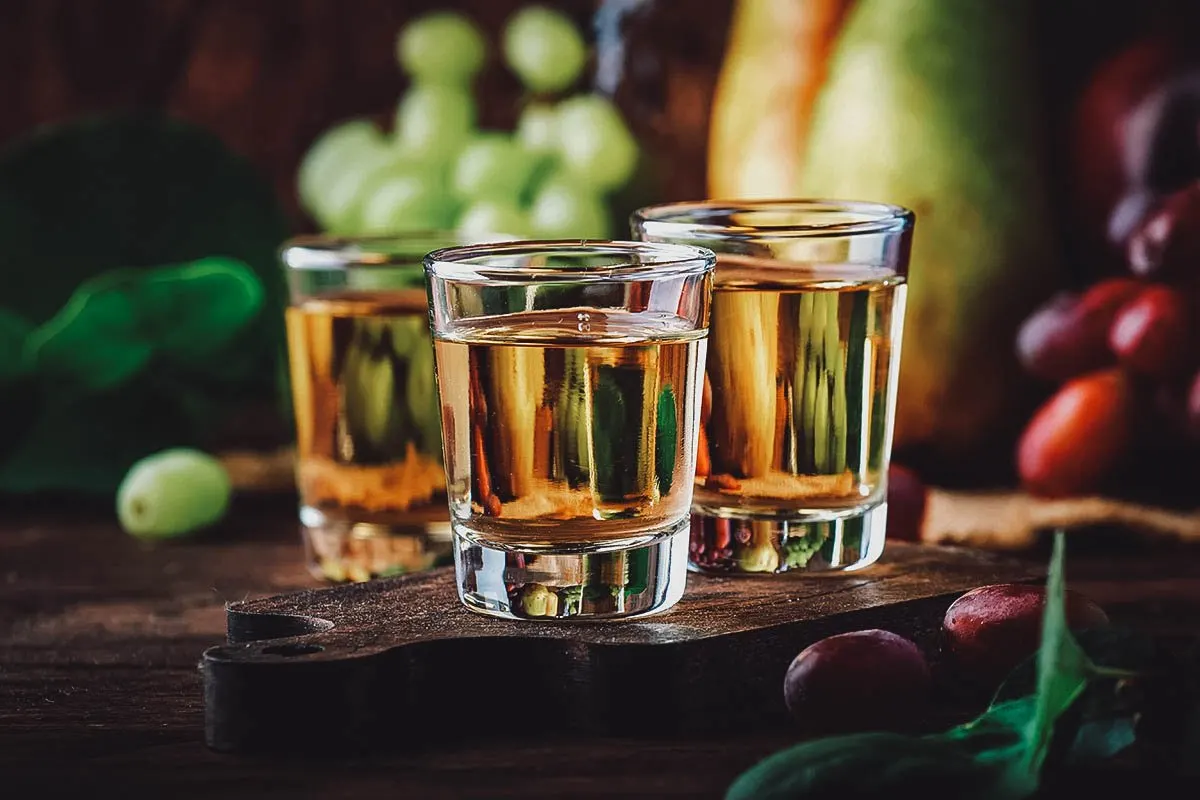
Photo by 5PH
Rakija is so popular that there are an estimated 10,000 private producers of this fruit brandy in Serbia. Živeli!
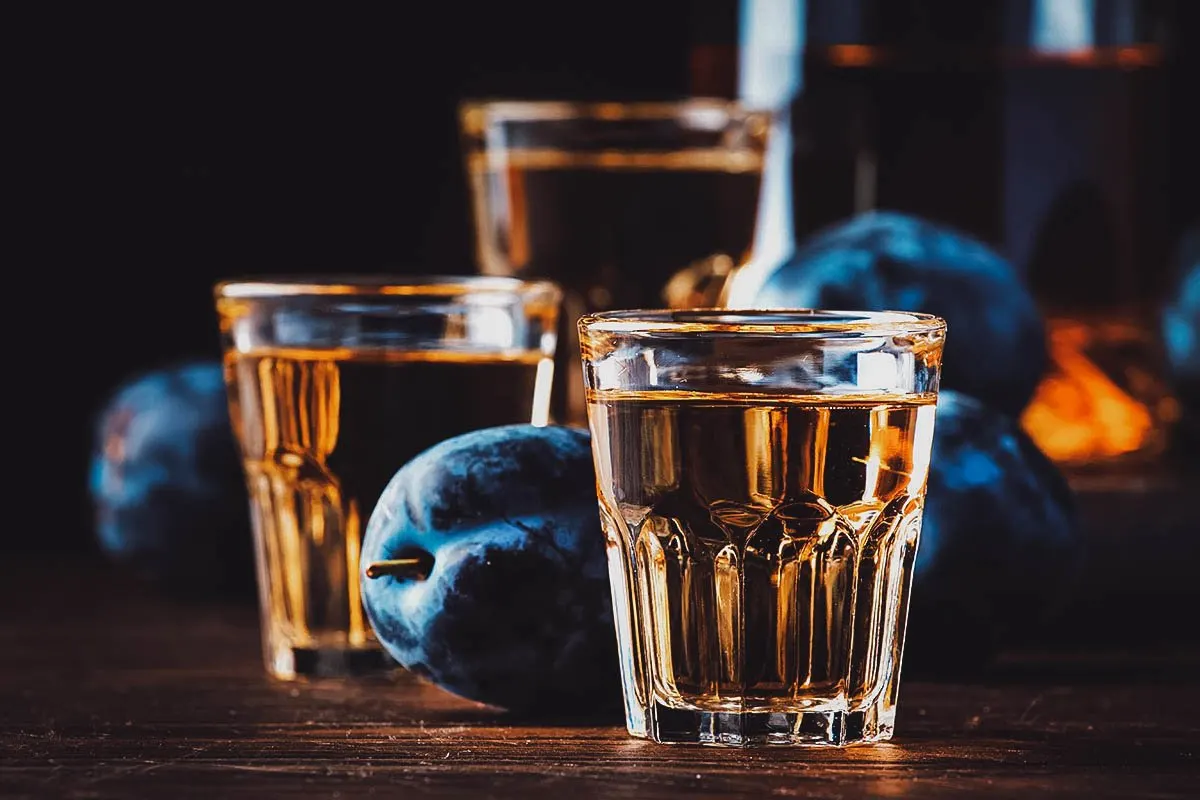
Photo by 5PH
SERBIAN FOOD TOURS
It’s easy enough to experience the food in Serbia on your own, but if you want to really dig into Serbian cuisine, then you may want to go on a food tour. Simply put, no one knows Serbian food better than a local, so what better way to learn about traditional Serbian dishes than by going on a guided food tour?
Not only will a local guide take you to the city’s best restaurants, markets, and street food stalls, but they’ll be able to explain all the unfamiliar Serbian foods to you in more detail. Check out Get Your Guide for a list of Serbian food tours in Belgrade and other cities throughout the country.
FINAL THOUGHTS ON SERBIAN CUISINE
Serbian food is an interesting mix of eastern and western flavors. While some dishes may be unfamiliar to western palates, most are quite tasty and definitely worth a try. You can find these dishes at many traditional restaurants in Serbia.
It’s important to remember that Serbian meals can be very hearty and filling. If you aren’t used to eating too much meat or starch-heavy dishes, then you may want to pace yourself.
Thanks for reading and we hope you enjoy all these delicious flavors when you visit Serbia!
Disclosure
Some of the links in this article on Serbian food are affiliate links. If you make a booking, then we’ll earn a small commission at no additional cost to you. As always, we only recommend products and services that we use ourselves and firmly believe in. We really appreciate your support as it helps us make more of these free travel and food guides. Thank you!
Cover photo by Miljan. Stock images via Depositphotos.

